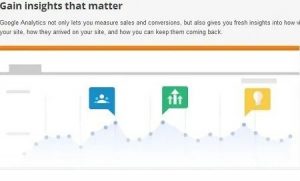If you look at your Google Analytics you will see that some people are “new visitors” and some are “returning visitors”. You also get to see some keywords that were used, plus the new “keywords not provided”, as well as “non-paid search traffic”. You can even see what browser they used to come to your site. This type of information will tell you a lot about your customers and potential customers.
Within your Google Analytics, you can customize the segments that you want to take a closer look at. You can segment by referring sites, location, and landing pages. All of this information is useful because the more information you have about your audience, the more targeted your content marketing can become, and the more you can be sure that your audience views your information in the places they visit.
The point of SEO is to help you get more organic traffic to your website. Part of improving SEO is to get as much information as possible about your current and potential clients. Use this information to create valuable content, as well as products and services for them. The way to find out more information is to dig deeper into analytics, segmenting the information you have in as many viable ways as possible. You want to figure out which visits are converted to sales, as well as which visits were not converted to sales. This information can help you figure out how to convert more visits into sales.
The entire point of doing all the work of SEO is to make more sales, get more newsletter sign-ups, increase leads, and make a connection with your audience. That’s why the data you study is so important. When you segment data to study, drilling down further will reveal a better detailed picture about your audience and what makes them act in the manner you want them to act. Consider questions like, “Which sales page worked better?” and, “What keywords attracted visitors who purchased?”
It is easy to get overwhelmed as there is so much data, so take it one-step at a time. Filter, group and segment the data. Figure out which visitor type they are – are they new visitors, customers, affiliates or do they fit in a different category? How did they get there? Did they use a particular keyword, click a pay-per-view advertisement, or find a guest blog post or ad on another site? Additionally, you want to know how new prospects act on your site in comparison to people who are already customers.
In order to be able to segment your traffic data, be sure that you’ve set up your analytics appropriately. Email, social media, mobile traffic, QR Codes, and redirects should include trackable links that let you know where the traffic originated. Without the parameters set properly, it will be difficult to explore how more segmented analytics will help your SEO and ultimately, your conversions.
As you discover a new way to gain more traffic, you realize that there is still more room to improve it. You wonder about how you should appear to your audience and make sure they see you the way you want them to. You want to give them a balance of high quality and rich content. So, join us and explore more about “Balancing Between Generating More Content for SEO And Maintaining Content Quality”.







